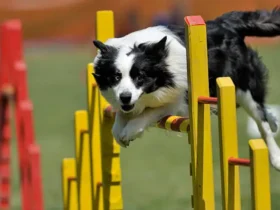Introduction
Seeing worms in your dog’s poop can be alarming. These parasites are not only gross but can also pose significant health risks to your pet and, in some cases, to humans. Fortunately, worms are treatable and preventable with the right knowledge and care. This guide will walk you through the types of worms that affect dogs, how to recognize them, and the steps to effectively get rid of them.
Types of Worms in Dogs
Understanding the types of worms that can infest dogs is the first step in effectively dealing with them. Here are the most common types of worms that can be found in a dog’s poop:
- Roundworms
- Appearance: Long, white, and spaghetti-like.
- Transmission: Often passed from mother to puppies during birth or through nursing. Dogs can also get roundworms by ingesting contaminated soil, feces, or infected prey.
- Symptoms: Weight loss, bloated stomach, diarrhea, vomiting, and a dull coat.
- Tapeworms
- Appearance: Flat, segmented, and can resemble rice grains when dried.
- Transmission: Typically acquired by ingesting fleas that carry tapeworm larvae.
- Symptoms: Often asymptomatic but can cause scooting, weight loss, and visible segments in feces.
- Hookworms
- Appearance: Not usually visible in feces without a microscope.
- Transmission: Acquired by ingesting larvae from contaminated soil or through skin penetration. Puppies can also get hookworms from their mother’s milk.
- Symptoms: Anemia, pale gums, diarrhea, weight loss, and lethargy.
- Whipworms
- Appearance: Not visible in stool without a microscope.
- Transmission: Ingested from contaminated soil or feces.
- Symptoms: Chronic diarrhea, weight loss, and anemia.
- Heartworms (while not found in stool, they’re worth mentioning due to their severity)
- Appearance: Worms reside in the heart and lungs.
- Transmission: Spread by mosquitoes.
- Symptoms: Persistent cough, fatigue, weight loss, and heart failure in severe cases.
Signs Your Dog Has Worms
Identifying the symptoms of worms is crucial for early treatment. While some dogs may show obvious signs, others might not display symptoms until the infestation is severe. Look out for the following:
- Visible Worms in Stool: Seeing worms or worm segments directly in your dog’s poop is a clear sign of infestation.
- Scooting: Dogs may drag their rear end across the ground due to irritation caused by worms.
- Vomiting: Worms can sometimes be vomited up, especially roundworms.
- Diarrhea: Frequent loose stools, sometimes with blood.
- Weight Loss: Despite having a normal or increased appetite, weight loss is a common sign.
- Pot-Bellied Appearance: Particularly common in puppies with heavy roundworm infestations.
- Dull Coat and Skin Issues: A lackluster coat and skin problems can be a result of nutritional deficiencies caused by worms.
- Lethargy: Low energy levels and fatigue.
Diagnosing Worms in Dogs
If you suspect your dog has worms, the first step is to visit a veterinarian for a proper diagnosis. Your vet will typically perform a fecal examination (fecal float test), where a sample of your dog’s stool is analyzed under a microscope to check for worm eggs or larvae. In some cases, additional blood tests may be required to check for other types of parasites like heartworms.
How to Get Rid of Worms in Dogs
- Visit the Veterinarian
The most effective way to treat worms in dogs is by consulting your veterinarian. They can confirm the type of worm and prescribe the appropriate deworming medication. - Administer Deworming Medications
- Over-the-Counter Dewormers: Some dewormers are available without a prescription and can be effective for certain types of worms. However, they may not be as comprehensive as prescription options.
- Prescription Dewormers: These are often more effective and specific to the type of worm infestation. Commonly used medications include pyrantel pamoate, fenbendazole, and praziquantel.
- Follow the Vet’s Instructions: It’s crucial to follow the prescribed dosage and treatment duration. Often, a follow-up treatment may be necessary to kill any newly hatched worms.
- Repeat Testing
A few weeks after treatment, a follow-up fecal test may be recommended to ensure the infestation has been completely cleared. - Maintain Good Hygiene
- Clean Up Poop Promptly: Regularly pick up and dispose of your dog’s feces to prevent reinfection and to protect other pets and humans.
- Wash Bedding and Toys: Clean and disinfect your dog’s bedding, toys, and any other items they frequently use.
- Regular Baths: Bathing your dog can help remove any worm eggs or larvae that may be on their fur.
Preventing Worms in Dogs
Prevention is key when it comes to protecting your dog from worms. Here are some effective preventive measures:
- Regular Deworming
- Follow a deworming schedule recommended by your veterinarian. Puppies often require more frequent deworming, while adult dogs may need treatment every few months, depending on their lifestyle and risk factors.
- Flea Control
- Since tapeworms are commonly transmitted through fleas, keeping fleas at bay is essential. Use flea preventive treatments like topical solutions, oral medications, or flea collars as recommended by your vet.
- Clean Environment
- Regularly clean and disinfect your dog’s living area. This helps reduce the risk of worm eggs and larvae in the environment.
- Proper Diet and Avoiding Raw Meat
- Feeding your dog a well-balanced, nutritious diet strengthens their immune system. Avoid giving raw or undercooked meat, as it can be a source of worms.
- Keep Your Yard Clean
- Regularly remove feces from your yard. This minimizes the risk of eggs and larvae being present in the environment where your dog plays.
- Annual Veterinary Check-Ups
- Routine vet visits and fecal tests are essential for early detection and prevention of worm infestations. Early diagnosis can prevent more severe health issues.
- Avoid Contact with Stray Animals
- Stray animals may carry worms. Limiting your dog’s interaction with unknown animals can reduce the risk of transmission.
Human Safety: Zoonotic Concerns
Many dog worms are zoonotic, meaning they can be transmitted to humans. Roundworms and hookworms, for example, can cause health issues if humans come into contact with contaminated soil or feces. To protect yourself and your family:
- Wash Hands Frequently: Especially after handling your dog, cleaning up their feces, or gardening.
- Wear Gloves: When handling soil or cleaning up after your pet.
- Teach Children Hygiene: Ensure children understand the importance of washing hands after playing outside or with pets.
- Regular Vet Check-Ups for Pets: This helps ensure they remain worm-free and less likely to transmit parasites to humans.
Conclusion
While finding worms in your dog’s poop can be unsettling, it’s a common issue that can be effectively managed with prompt treatment and preventive measures. Regular vet visits, good hygiene practices, and preventive care will keep your dog healthy and free from these parasites. By staying vigilant and proactive, you can ensure a happy, healthy life for your furry friend while keeping your household safe.











Leave a Reply